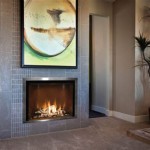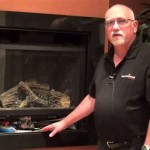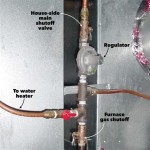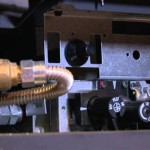How To Update a Fireplace
A fireplace, often a focal point in a home, can benefit significantly from periodic updates. Modernizing or refreshing a fireplace can enhance the aesthetic appeal of a living space, improve energy efficiency, and increase the overall value of a property. The scope of a fireplace update can range from simple cosmetic changes to more involved structural alterations, depending on the homeowner's goals and budget. Careful planning and consideration of various factors are crucial for a successful fireplace update.
Before embarking on any fireplace renovation project, it is essential to assess the existing structure's condition. This assessment includes checking the chimney for cracks, leaks, or blockages. A professional chimney sweep can perform a thorough inspection and identify potential problems that need addressing. Examining the firebox for damage, such as cracked bricks or deteriorating mortar, is also important. Additionally, the hearth should be inspected for stability and any signs of wear and tear.
Updating a fireplace can involve different levels of complexity. Some homeowners may opt for a purely cosmetic refresh, while others might pursue more comprehensive renovations that involve structural changes. Regardless of the project scope, it's important to research local building codes and regulations pertaining to fireplace construction and modifications. Obtaining necessary permits before starting any work is also crucial to ensure compliance and avoid potential future issues.
Key Point 1: Cosmetic Enhancements for Fireplace Refresh
Cosmetic updates are the most accessible and budget-friendly way to transform a fireplace. These modifications primarily focus on the visual appeal of the fireplace without altering its core structure. Several options are available for achieving a refreshed look.
One popular approach is painting the existing fireplace surround. This can be a simple and effective way to change the color scheme and update the overall appearance. Choosing a heat-resistant paint specifically designed for fireplaces is essential to prevent damage from high temperatures. Before painting, the surface should be thoroughly cleaned and prepped to ensure proper adhesion. Consider complementary colors to other features in the room for cohesive aesthetics.
Another cosmetic enhancement involves replacing outdated fireplace accessories. This includes items such as the fire screen, andirons, and tool set. Opting for modern designs or finishes can instantly update the look of the fireplace. Replacing the fire screen with a sleek glass door can also improve safety and energy efficiency by preventing drafts and containing embers.
Adding decorative elements around the fireplace can also enhance its visual appeal. This can include installing a new mantel, adding decorative tiles, or incorporating artwork or sculptures. The key is to choose elements that complement the existing décor and create a cohesive aesthetic. The mantel can be crafted from different materials, such as wood, stone, or metal, providing various design possibilities.
Refacing the fireplace surround is another option for cosmetic updates. This involves covering the existing surround with new materials, such as stone veneer, brick, or tile. This can significantly alter the fireplace's appearance without requiring extensive structural work. Stone veneer, in particular, offers a wide range of textures and colors, allowing for customization to suit various design preferences. Proper installation is key to ensuring that the new facing adheres securely to the existing surround.
Key Point 2: Structural Modifications and Upgrades
Structural modifications often involve more extensive work and may require professional expertise. These upgrades can address safety concerns, improve energy efficiency, or significantly alter the fireplace's design. Careful planning and adherence to building codes are crucial for structural modifications.
One common structural modification is relining the chimney. Over time, the chimney liner can deteriorate due to exposure to heat and corrosive byproducts of combustion. A damaged chimney liner can pose a serious safety hazard, increasing the risk of chimney fires and carbon monoxide poisoning. Relining the chimney involves installing a new liner, which can be made of clay tiles, metal, or a poured-in-place material. A professional chimney sweep can assess the condition of the existing liner and recommend the appropriate relining method.
Converting an existing wood-burning fireplace to a gas fireplace is another popular structural upgrade. This conversion offers several advantages, including increased convenience, improved energy efficiency, and reduced emissions. A gas fireplace can be easily ignited and controlled with a remote, eliminating the need for manually loading and tending to firewood. However, converting to a gas fireplace requires installing a gas line and ensuring proper ventilation, which should be performed by a qualified technician.
Modifying the firebox size or shape is another type of structural modification. This can involve expanding the firebox to accommodate larger logs or altering its shape to improve combustion efficiency. Modifying the firebox requires careful consideration of the fireplace's structural integrity and ventilation requirements. Consulting with a structural engineer is recommended to ensure that the modifications are safe and comply with building codes.
Installing a fireplace insert is another way to upgrade an existing fireplace. A fireplace insert is a self-contained heating appliance that is installed inside the existing firebox. Inserts are available in wood-burning, gas, and electric models. They offer improved energy efficiency and heating performance compared to traditional open fireplaces. Fireplace inserts can significantly reduce heat loss up the chimney and provide a more consistent and controllable heat source.
Key Point 3: Safety and Energy Efficiency Considerations
Updating a fireplace provides an opportunity to enhance both safety and energy efficiency. Implementing various measures can minimize hazards and reduce energy consumption, leading to a more comfortable and cost-effective home.
Installing a carbon monoxide detector is crucial for ensuring safety. Carbon monoxide is a colorless, odorless gas that can be produced by incomplete combustion in a fireplace. A carbon monoxide detector should be placed near the fireplace to alert occupants of potentially dangerous levels. Regularly testing the detector and replacing batteries as needed is essential for maintaining its functionality.
Improving fireplace ventilation is another important safety consideration. Proper ventilation is necessary to ensure that smoke and combustion gases are properly exhausted from the home. An inadequate chimney draft can cause smoke to back up into the living space, posing a health hazard. Having the chimney professionally inspected and cleaned regularly can help maintain proper ventilation. A chimney cap can also prevent debris and animals from entering and blocking the chimney.
Sealing air leaks around the fireplace can significantly improve energy efficiency. Air leaks can allow cold air to enter the home and warm air to escape, increasing heating costs. Weatherstripping around the fireplace surround and caulking any gaps or cracks can help seal air leaks. Installing a fireplace damper can also prevent drafts when the fireplace is not in use.
Choosing energy-efficient fireplace appliances and accessories can also reduce energy consumption. Opting for a gas fireplace with a high AFUE (Annual Fuel Utilization Efficiency) rating or a wood-burning fireplace insert with EPA certification can minimize energy waste. Using energy-efficient lighting around the fireplace can also contribute to overall energy savings.
Maintaining the fireplace regularly is crucial for both safety and energy efficiency. This includes scheduling annual chimney inspections and cleanings, repairing any damage to the firebox or chimney liner, and ensuring that all components are functioning properly. Regular maintenance can prevent potential problems and extend the lifespan of the fireplace.
Ultimately, updating a fireplace involves a series of decisions that must be tailored to the individual homeowner's needs, budget, and design preferences. However, by carefully considering the existing structure, exploring various cosmetic and structural options, and prioritizing safety and energy efficiency, a fireplace can be transformed into a beautiful and functional focal point that enhances the overall value and enjoyment of a home.

How To Update The Look Of Your Fireplace

How To Update The Look Of Your Fireplace

How To Update A Fireplace On Budget Home Matters Ahs

Fireplace Update Ideas Stoll Industries Made In The Usa

How To Update A Brick Fireplace Homemade Ginger

30 Fireplace Remodel Ideas For Any Budget

How To Update A Fireplace On Budget Moneywise Moms Easy Family Recipes

How To Update Your Fireplace With Paint Lost Found Decor

30 Fireplace Remodel Ideas For Any Budget

Fireplace Update
Related Posts








